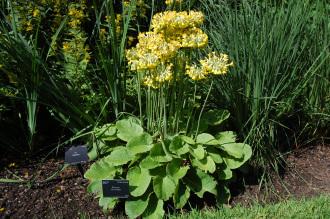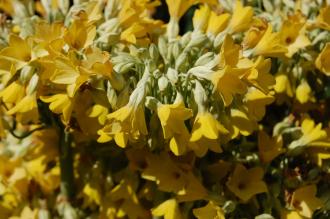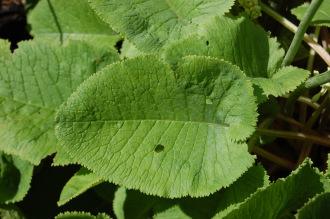
Primula florindae (18/07/15, Kew Gardens, London)
Position: Full sun to partial shade
Flowering period: Summer
Soil: Moist
Eventual Height: 1m
Eventual Spread: 60cm
Hardiness: 3a, 3b, 4a, 4b, 5a, 5b, 6a, 6b, 7a, 7b, 8a, 8b, 9a, 9b
Family: Primulaceae
Primula florindae is a deciduous herbaceous perennial with a clump forming habit. Its mid green leaves are elliptic with irregularly dentate margins, up to 15cm long, 11cm across and arranged in a rosettes. Its fragrant yellow flowers are bell shaped, up to 2cm across and appear in terminal umbles of up to 40 flowers at the end of long flowering stalks.

Primula florindae Flower (18/07/15, Kew Gardens, London)
Primula florindae, commonly known as the Giant Cowslip or Tibetan Cowslip, is native to south east Tibet. In its native habitat it grows on river banks/ margins and boggy sites.
The etymological root of the binomial name Primula is from the Latin name for the Primrose. Florindae is named after the wife of Francis Kingdon Ward (1885 – 1958) who first collected this plant.
The landscape architect may find Primula florindae useful as a summer flowering perennial suitable for boggy and waterside locations.

Primula florindae Leaf (18/07/15, Kew Gardens, London)
Ecologically, Primula florindae flowers are attractive to pollinating insects.
The Royal Horticultural Society has given Primula florindae their prestigious Award of Garden Merit in 1993.
Primula florindae prefers moist soils. It tolerates most pH of soil, although it prefers a neutral to acid pH. It dislikes dry soils.
Primula florindae requires little maintenance. Large clumps may be divided in early spring.

Landscape Architecture

